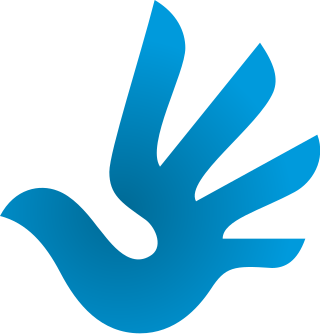
Human rights are universally recognized moral principles or norms that establish standards of human behavior and are often protected by both national and international laws. These rights are considered inherent and inalienable, meaning they belong to every individual simply by virtue of being human, regardless of characteristics like nationality, ethnicity, religion, or socio-economic status. They encompass a broad range of civil, political, economic, social, and cultural rights, such as the right to life, freedom of expression, protection against enslavement, and right to education.

The Universal Declaration of Human Rights (UDHR) is an international document adopted by the United Nations General Assembly that enshrines the rights and freedoms of all human beings. Drafted by a UN committee chaired by Eleanor Roosevelt, it was accepted by the General Assembly as Resolution 217 during its third session on 10 December 1948 at the Palais de Chaillot in Paris, France. Of the 58 members of the United Nations at the time, 48 voted in favour, none against, eight abstained, and two did not vote.

The Charter of the United Nations (UN) is the foundational treaty of the United Nations. It establishes the purposes, governing structure, and overall framework of the UN system, including its six principal organs: the Secretariat, the General Assembly, the Security Council, the Economic and Social Council, the International Court of Justice, and the Trusteeship Council.

The International Covenant on Civil and Political Rights (ICCPR) is a multilateral treaty that commits nations to respect the civil and political rights of individuals, including the right to life, freedom of religion, freedom of speech, freedom of assembly, electoral rights and rights to due process and a fair trial. It was adopted by United Nations General Assembly Resolution 2200A (XXI) on 16 December 1966 and entered into force on 23 March 1976 after its thirty-fifth ratification or accession. As of June 2024, the Covenant has 174 parties and six more signatories without ratification, most notably the People's Republic of China and Cuba; North Korea is the only state that has tried to withdraw.
John Peters Humphrey was a Canadian legal scholar, jurist, and human rights advocate. He is most famous as the principal author of the first draft of the Universal Declaration of Human Rights.

René Samuel Cassin was a French jurist known for co-authoring the Universal Declaration of Human Rights and receiving the Nobel Peace Prize.
China is one of the members of the United Nations and is one of five permanent members of its Security Council. One of the victorious Allies of World War II, the Republic of China (ROC) joined the UN as one of its founding member countries in 1945. The subsequent resumption of the Chinese Civil War between the government of Republic of China and the rebel forces of the Chinese Communist Party, led to the latter's victory on the mainland and the establishment of the People's Republic of China (PRC) in 1949. Nearly all of mainland China was soon under its control and the ROC government retreated to the island of Taiwan.
The United Nations Prizes in the Field of Human Rights were instituted by United Nations General Assembly in 1966. They are intended to "honour and commend people and organizations which have made an outstanding contribution to the promotion and protection of the human rights embodied in the Universal Declaration of Human Rights and in other United Nations human rights instruments".

Human Rights Day (HRD) is celebrated annually around the world on 10 December every year.

The history of the United Nations has its origins in World War II beginning with the Declaration of St James's Palace. Taking up the Wilsonian mantle in 1944–1945, US President Franklin D. Roosevelt pushed as his highest postwar priority the establishment of the United Nations to replace the defunct League of Nations. Roosevelt planned that it would be controlled by the United States, Soviet Union, United Kingdom and China. He expected this Big Four would resolve all major world problems at the powerful Security Council. However the UN was largely paralyzed by the veto of the Soviet Union when dealing with Cold War issues from 1947 to 1989. Since then its aims and activities have expanded to make it the archetypal international body in the early 21st century.

Peng Chun Chang, commonly known as P. C. Chang, was a Chinese academic, philosopher, playwright, human rights activist, and diplomat. He was born in Tianjin, China, and died at his home in Nutley, New Jersey.

The International Bill of Human Rights was the name given to UN General Assembly Resolution 217 (III) and two international treaties established by the United Nations. It consists of the Universal Declaration of Human Rights, the International Covenant on Civil and Political Rights with its two Optional Protocols and the International Covenant on Economic, Social and Cultural Rights. The two covenants entered into force in 1976, after a sufficient number of countries had ratified them.

Charles Habib Malik was a Lebanese academic, diplomat, philosopher, and politician. He served as the Lebanese representative to the United Nations, the President of the Commission on Human Rights and the United Nations General Assembly, a member of the Lebanese Cabinet, the head of the Ministry of Culture and Higher Education and of the Ministry of Foreign Affairs and Emigration, as well as being a theologian. He participated in the drafting of the 1948 Universal Declaration of Human Rights.
While belief in the sanctity of human life has ancient precedents in many religions of the world, the foundations of modern human rights began during the era of renaissance humanism in the early modern period. The European wars of religion and the civil wars of seventeenth-century Kingdom of England gave rise to the philosophy of liberalism and belief in natural rights became a central concern of European intellectual culture during the eighteenth-century Age of Enlightenment. Ideas of natural rights, which had a basis in natural law, lay at the core of the American and French Revolutions which occurred toward the end of that century, but the idea of human rights came about later. Democratic evolution through the nineteenth century paved the way for the advent of universal suffrage in the twentieth century. Two world wars led to the creation of the Universal Declaration of Human Rights.

The right to sexuality incorporates the right to express one's sexuality and to be free from discrimination on the grounds of sexual orientation. Although it is equally applicable to heterosexuality, it also encompasses human rights of people of diverse sexual orientations, including lesbian, gay, asexual and bisexual people, and the protection of those rights. The inalienable nature of rights belonging to every person by virtue of being human.
The Universal Declaration on the Eradication of Hunger and Malnutrition was adopted on 16 November 1974, by governments who attended the 1974 World Food Conference that was convened under General Assembly resolution 3180 (XXVIII) of 17 December 1973. It was later endorsed by General Assembly resolution 3348 (XXIX), of 17 December 1974. This Declaration combined discussions of the international human right to adequate food and nutrition with an acknowledgement of the various economic and political issues that can affect the production and distribution of food related products. Within this Declaration, it is recognised that it is the common purpose of all nations to work together towards eliminating hunger and malnutrition. Further, the Declaration explains how the welfare of much of the world's population depends on their ability to adequately produce and distribute food. In doing so, it emphasises the need for the international community to develop a more adequate system to ensure that the right to food for all persons is recognised. The opening paragraph of the Declaration, which remains to be the most recited paragraph of the Declaration today, reads:
Every man, woman and child has the inalienable right to be free from hunger and malnutrition in order to develop fully and maintain their physical and mental faculties.
New Zealand has taken an active role in the negotiation and drafting of several international human rights instruments including the Universal Declaration of Human Rights, the Convention on the Rights of Persons with Disabilities, and the Second Optional Protocol to the International Covenant on Civil and Political Rights.

Lieutenant Colonel William Roy Hodgson, was an Australian soldier, public servant and diplomat. His significant achievements were being involved in the formation of the United Nations General Assembly and representing Australia internationally at many diplomatic conferences during the Second World War, and being a member of the drafting committee of the UN Universal Declaration of Human Rights.

Hernán Santa Cruz was a Chilean lawyer and diplomat, Chile's first delegate to the United Nations and one of the nine original drafters of the Universal Declaration of Human Rights, one of the most relevant documents of humanity.

The 1968 Nobel Peace Prize was awarded to the French jurist René Cassin (1887–1976) "for his struggle to ensure the rights of man as stipulated in the UN Declaration." He is the ninth French recipient of the peace prize.












